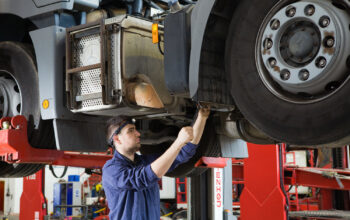Dust control during construction: minimizing airborne particles for a healthier environment
Large amounts of dust are often generated on construction sites, which are not only annoying, but also pose significant risks to health and the environment. During construction, dust control is critical to reducing airborne particle emissions, protecting employee health and maintaining a cleaner atmosphere. To properly control dust on construction sites, this article examines various tactics and best practices.
Understand the Risks of Construction Dust
The numerous particles that make up construction dust include silica, cement, wood, metals and others. These tiny particles are easily inhaled, which can lead to respiratory illness, lung disease, and other health complications. In addition, flying dust can contaminate neighboring areas, reducing visibility and creating a slip hazard. In order to reduce these risks and promote a safer work environment, it is imperative to use the right dust management methods.
Preventive Measures
Prevention is the first step to dust control during construction. Contractors should incorporate dust control methods into the planning and design phase of their projects. This includes assessing site conditions, selecting the right materials and considering dust reduction strategies. For example, covering up inventory and materials, suppressing dust with wet means (such as water spraying), and using dust collection devices such as vacuum systems or dust extractors can drastically reduce dust emissions.
Machinery and equipment
Machines and devices used in construction can contribute significantly to the formation of dust. Because poorly maintained machines tend to produce more dust, it’s important to perform routine maintenance and inspections to ensure equipment is working as intended. In addition, dust emissions can be reduced by incorporating dust suppression technology into equipment, such as water spray systems on breakers or drill bits. To minimize dust at the source, it is beneficial to use newer machines with built-in dust management capabilities.
Customs in the Workplace
Controlling dust on site during construction requires the use of efficient site practices. To manage dust exposure, these procedures include designating no-smoking zones, regulating vehicle speed and movement, and educating employees through training and awareness campaigns. Additionally, to prevent employees from breathing in hazardous dust particles, it is important to encourage the use of personal protective equipment (PPE) such as respirators, goggles and gloves.
Waste Management
An important part of dust control is proper waste disposal. Construction waste such as concrete or plasterboard can contribute to dust formation if not disposed of properly. Dust can be avoided by implementing waste management techniques. This includes sorting different types of waste, using covered bins and making sure waste is removed and disposed of regularly.
Evaluation and Monitoring
To ensure the effectiveness of dust management techniques, they must be regularly monitored and evaluated. Dust measurement devices, air quality tests or visual inspections can be used for this purpose. Adjustments can be made to improve dust management techniques and protect both employees and the environment by locating locations where current dust control measures are inadequate.
During construction, dust control is vital to protect the health and well-being of workers and reduce environmental impact. Construction companies can make the environment safer and cleaner for everyone involved in the process by taking preventive precautions, using the right tools and machines, employing workplace practices, disposing of waste effectively and keeping an eye on dust levels.




